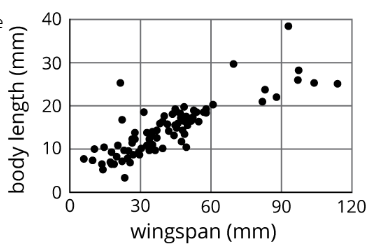7.3.4: Applications of Arithmetic with Powers of 10
- Page ID
- 36793
\( \newcommand{\vecs}[1]{\overset { \scriptstyle \rightharpoonup} {\mathbf{#1}} } \)
\( \newcommand{\vecd}[1]{\overset{-\!-\!\rightharpoonup}{\vphantom{a}\smash {#1}}} \)
\( \newcommand{\id}{\mathrm{id}}\) \( \newcommand{\Span}{\mathrm{span}}\)
( \newcommand{\kernel}{\mathrm{null}\,}\) \( \newcommand{\range}{\mathrm{range}\,}\)
\( \newcommand{\RealPart}{\mathrm{Re}}\) \( \newcommand{\ImaginaryPart}{\mathrm{Im}}\)
\( \newcommand{\Argument}{\mathrm{Arg}}\) \( \newcommand{\norm}[1]{\| #1 \|}\)
\( \newcommand{\inner}[2]{\langle #1, #2 \rangle}\)
\( \newcommand{\Span}{\mathrm{span}}\)
\( \newcommand{\id}{\mathrm{id}}\)
\( \newcommand{\Span}{\mathrm{span}}\)
\( \newcommand{\kernel}{\mathrm{null}\,}\)
\( \newcommand{\range}{\mathrm{range}\,}\)
\( \newcommand{\RealPart}{\mathrm{Re}}\)
\( \newcommand{\ImaginaryPart}{\mathrm{Im}}\)
\( \newcommand{\Argument}{\mathrm{Arg}}\)
\( \newcommand{\norm}[1]{\| #1 \|}\)
\( \newcommand{\inner}[2]{\langle #1, #2 \rangle}\)
\( \newcommand{\Span}{\mathrm{span}}\) \( \newcommand{\AA}{\unicode[.8,0]{x212B}}\)
\( \newcommand{\vectorA}[1]{\vec{#1}} % arrow\)
\( \newcommand{\vectorAt}[1]{\vec{\text{#1}}} % arrow\)
\( \newcommand{\vectorB}[1]{\overset { \scriptstyle \rightharpoonup} {\mathbf{#1}} } \)
\( \newcommand{\vectorC}[1]{\textbf{#1}} \)
\( \newcommand{\vectorD}[1]{\overrightarrow{#1}} \)
\( \newcommand{\vectorDt}[1]{\overrightarrow{\text{#1}}} \)
\( \newcommand{\vectE}[1]{\overset{-\!-\!\rightharpoonup}{\vphantom{a}\smash{\mathbf {#1}}}} \)
\( \newcommand{\vecs}[1]{\overset { \scriptstyle \rightharpoonup} {\mathbf{#1}} } \)
\( \newcommand{\vecd}[1]{\overset{-\!-\!\rightharpoonup}{\vphantom{a}\smash {#1}}} \)
Lesson
Let's use powers of 10 to help us make calculations with large and small numbers.
Exercise \(\PageIndex{1}\): What Information Do You Need?
What information would you need to answer these questions?
- How many meter sticks does it take to equal the mass of the Moon?
- If all of these meter sticks were lined up end to end, would they reach the Moon?
Exercise \(\PageIndex{2}\): Meter Sticks to the Moon
1. How many meter sticks does it take to equal the mass of the moon? Explain or show your reasoning.
2. Label the number line and plot your answer for the number of meter sticks.

3. If you took all the meter sticks from the last question and lined them up end to end, will they reach the Moon? Will they reach beyond the Moon? If yes, how many times farther will they reach? Explain your reasoning.
4. One light year is approximately \(10^{16}\) meters. How many light years away would the meter sticks reach? Label the number line and plot your answer.

Are you ready for more?
Here is a problem that will take multiple steps to solve. You may not know all the facts you need to solve the problem. That is okay. Take a guess at reasonable answers to anything you don’t know. Your final answer will be an estimate.
If everyone alive on Earth right now stood very close together, how much area would they take up?
Exercise \(\PageIndex{3}\): That's a Tall Stack of Cash
In 2016, the Burj Khalifa was the tallest building in the world. It was very expensive to build.
Consider the question: Which is taller, the Burj Khalifa or a stack of the money it cost to build the Burj Khalifa?
1.What information would you need to be able to solve the problem?
2. Record the information your teacher shares with the class.
3. Answer the question “Which is taller, the Burj Khalifa or a stack of the money it cost to build the Burj Khalifa?” and explain or show your reasoning.
4. Decide what power of 10 to use to label the rightmost tick mark of the number line, and plot the height of the stack of money and the height of the Burj Khalifa.

5. Which has more mass, the Burj Khalifa or the mass of the pennies it cost to build the Burj Khalifa? What information do you need to answer this?
6. Decide what power of 10 to use to label the rightmost tick mark of the number line, and plot the mass of the Burj Khalifa and the mass of the pennies it cost to build the Burj Khalifa.

Summary
Powers of 10 can be helpful for making calculations with large or small numbers. For example, in 2014, the United States had
318,586,495
people who used the equivalent of
2,203,799,778,107
kilograms of oil in energy. The amount of energy per person is the total energy divided by the total number of people. We can use powers of 10 to estimate the total energy as \(2\cdot 10^{12}\) and the population as \(3\cdot 10^{8}\) So the amount of energy per person in the U.S. is roughly \((2\cdot 10^{12})\div (3\cdot 10^{8})\) That is the equivalent of \(\frac{2}{3}\cdot 10^{4}\) kilograms of oil in energy. That’s a lot of energy—the equivalent of almost 7,000 kilograms of oil per person!
In general, when we want to perform arithmetic with very large or small quantities, estimating with powers of 10 and using exponent rules can help simplify the process. If we wanted to find the exact quotient of 2,203,799,778,107 by 318,586,495, then using powers of 10 would not simplify the calculation.
Practice
Exercise \(\PageIndex{4}\)
Which is larger: the number of meters across the Milky Way, or the number of cells in all humans? Explain or show your reasoning.
Some useful information:
- The Milky Way is about 100,000 light years across.
- There are about 37 trillion cells in a human body.
- One light year is about \(10^{16}\) meters.
- The world population is about 7 billion.
Exercise \(\PageIndex{5}\)
Ecologists measure the body length and wingspan of 127 butterfly specimens caught in a single field.
- Draw a line that you think is a good fit for the data.
- Write an equation for the line.
- What does the slope of the line tell you about the wingspans and lengths of these butterflies?

(From Unit 6.2.3)
Exercise \(\PageIndex{6}\)
Diego was solving an equation, but when he checked his answer, he saw his solution was incorrect. He knows he made a mistake, but he can’t find it. Where is Diego’s mistake and what is the solution to the equation?
\[\begin{aligned} -4(7-2x)&=3(x+4)\\ -28-8x&=3x+12\\ -28&=11x+12\\ -40&=11x\\ -\frac{40}{11}&=x\end{aligned}\nonumber\]
(From Unit 4.2.4)
Exercise \(\PageIndex{7}\)
The two triangles are similar. Find \(x\).

(From Unit 2.2.2)


